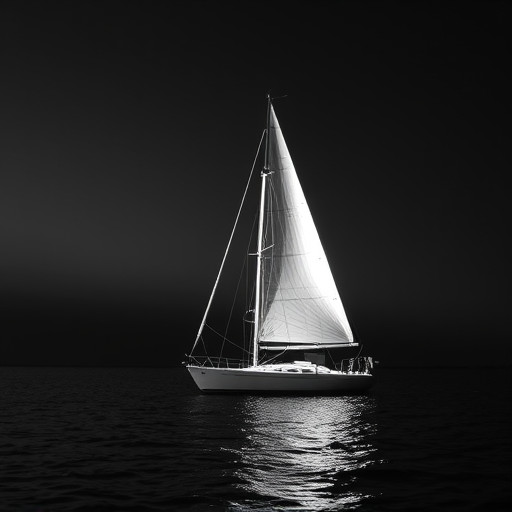Sailboat Operation & Components:
This section explains how sailboats use wind power through strategic sail deployment, with key components like mainsails and jibs mounted on a mast for propulsion and steering. Sailor skill combines with understanding wind direction, strength, tides, and currents to navigate safely. The sailboat's performance hinges on four essential elements: the hull for buoyancy, sails for harnessing wind power, rig for sail support, and steering system (especially the rudder) for directional control.
Introduction: Unfurling the Sails of Adventure
Sailboats, a testament to human ingenuity and our enduring connection with the sea, have captivated adventurers and explorers for centuries. This article takes you on a journey through the world of sail, exploring its fundamentals, diverse designs, and the art of navigating these majestic vessels. From understanding the basics that power a sailboat’s motion to delving into the various types tailored for specific purposes, we’ll uncover the secrets of this ancient yet ever-evolving mode of transportation. Whether you’re an aspiring sailor or simply curious about life on the open water, get ready to set sail and discover the magic of wind-powered travel.
- Understanding the Basics of Sailboat Operation
- – Definition and history of sailboats
- – Key components: hull, sails, rig, and steering system
Understanding the Basics of Sailboat Operation

Understanding the Basics of Sailboat Operation
At its core, a sailboat operates on the principle of using wind to propel itself across bodies of water. This is achieved through the strategic use of sails, which catch and harness the power of the wind. The primary types of sails include mainsails, which are mounted at the front (bow) of the boat and powered by the main mast, and jibs, smaller sails positioned closer to the bow or stern that assist in steering and provide additional propulsion. By adjusting the angles and tensions of these sails, sailors can navigate in various directions, even against the wind’s direction using techniques like tacking.
The operation of a sailboat involves a delicate interplay between the sailor’s skill and the natural forces at play. Steering is accomplished through the use of rudders, while the boat’s speed and course are controlled by adjusting the sails. Sailors must also be attuned to weather conditions and wind patterns to make efficient and safe journeys. This includes understanding concepts like wind direction (port or starboard), wind strength, and the impact of tides and currents on navigation.
– Definition and history of sailboats

A sailboat is a vessel designed to harness wind power for propulsion, using one or more sails. The concept of sailing dates back thousands of years, with evidence suggesting that ancient civilizations used sails for transportation and trade as early as 4000 BCE. Over time, sailboats evolved from simple, single-masted craft to complex, multi-masted ships capable of traversing vast oceanic distances.
The historical development of sailboats mirrors the advancement of maritime technology and human exploration. Ancient Greek and Roman sailors refined sailing techniques, while the Age of Discovery in the 15th and 16th centuries saw the construction of larger, more robust sailboats for long-distance exploration. The invention of new materials like canvas and wood treated with preservatives further enhanced their capabilities, leading to the iconic clipper ships and three-masted sailing vessels that dominated maritime trade until the advent of steam engines in the 19th century.
– Key components: hull, sails, rig, and steering system

The key to a sailboat’s functionality lies in four primary components: the hull, sails, rig, and steering system. The hull is the backbone of the boat, providing buoyancy and structural support. It is designed to slice through water efficiently, minimizing drag while keeping the vessel stable. Sails, made from durable materials like Dacron or Kevlar, harness wind power to propel the ship forward. They come in various shapes and sizes, each optimized for different sailing conditions and speeds.
The rig refers to the set of masts, stays, and lines that hold the sails in place. It must be carefully designed to balance weight and strength while allowing for ease of handling. The steering system, typically a rudder, is crucial for controlling the sailboat’s direction. Whether trolling leisurely or racing at high speeds, these components work in harmony to allow sailboats to navigate bodies of water using only the force of the wind.
In conclusion, sailboats, with their rich historical roots, operate through a harmonious interplay of design and natural forces. From the basic rig to complex steering systems, each component contributes to the vessel’s ability to harness wind power. Whether it’s the sleek speed of a racing yacht or the sturdy dependability of a traditional sailboat, these vessels continue to captivate and inspire those who dare to navigate the open seas. Understanding their operation unlocks a world of adventure and environmental harmony.
